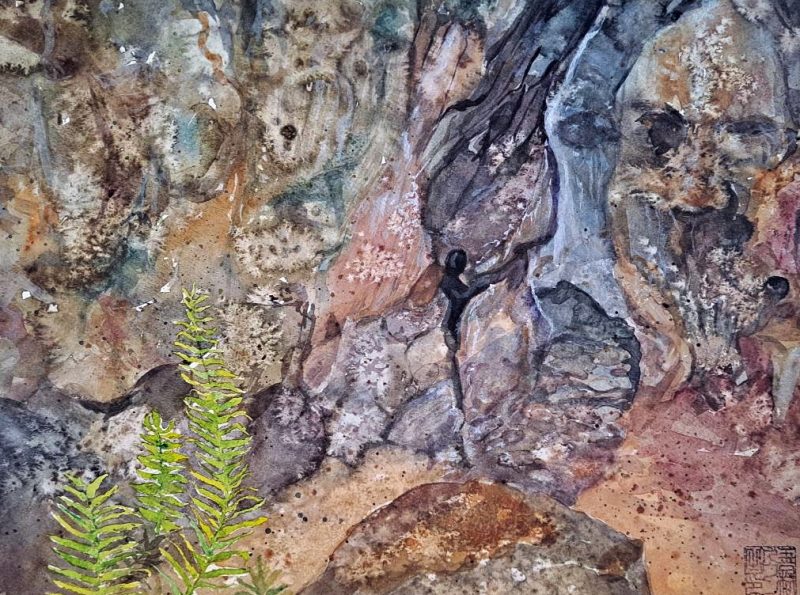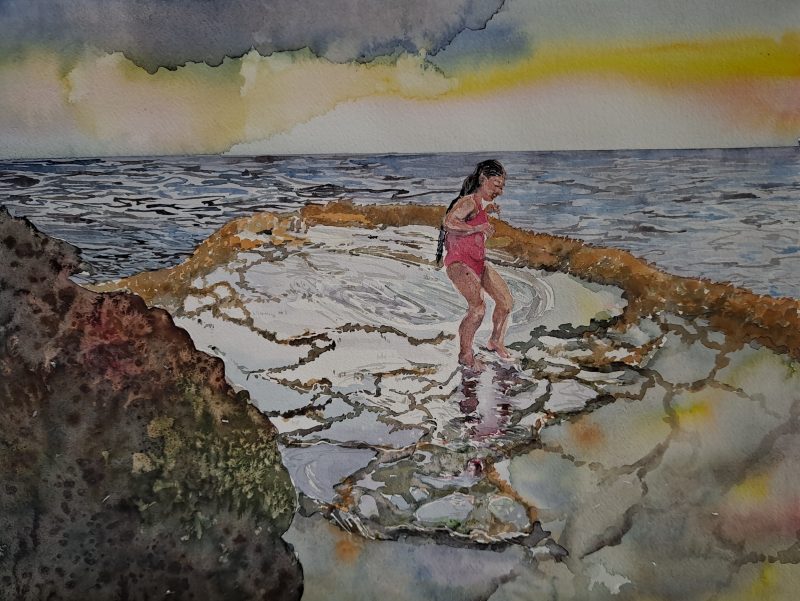
An exhibit featuring wahi pana or storied places of the West Oʻahu area from Pokaʻi Bay or Maraea to Kaʻena Point is on view at the James and Abigail Campbell Library at the University of Hawaiʻiʻs West Oʻahu campus until the end of June. It features images Iʻve created in collaboration with Koa Ike Foundationʻs kumu Glen Kila and Christopher Oliviera along with photography from Jan Beckett who has spent decades documenting wahi pana of Hawaiʻi.
The West Side of Oʻahu still has undeveloped tracts and microclimates that have rich human history and natural habitats that are at risk of being lost forever. It should be a world cultural heritage and and nature preserve for humanity but no one knows what the future holds. To this end, my project started in 2018 when I first began to explore how I could incorporate my homeʻs history and culture into my practice.
I have been plein air painting for many years in watercolor and other media but this process is a collaborative one where I go on huakaʻi or walks and trips with anakala Glen to listen to his stories (moʻolelo) about the sites his family and people come from. The oral history is rich with historical events, names of places and people that predate the cult of Pele and the conquests of the Kamehameha dynasty. Hawaiʻi has had many migrations of foreign peoples and plant and animal species and what is the true Hawaiʻi becomes debatable depending on when you set the clock of the ʻtrueʻ Hawaiʻi. Most agree that the biggest change, and damage to both people and land was the contact with Western European settlers but history is never clean and clear cut and to understand and then judge the effects of various changes must be considered with a big dash of grace and empathy for all.
I walk the site often more than once listening to uncle and then return at different times of day, season and weather. I pray and meditate at the site and in between visits until an image and impression forms from the stories soaking into my bones. I then return and begin my watercolors, 12x16in because I often donʻt have time to do larger pieces on site and most of them are infused with alae or Hawaiian salt, both for effects and to ground it literally to the land and sea of Hawaiʻi. It usually takes at least 3 layers on site and I can finish it with another pass or three so the process takes several days and can span several weeks.
The scenes are not illustrations or documentary landscape they are hopefully a timeless and timely glimpse into these spaces. One hopefully can glimpse how it was when the Kilas first arrived and settled the land, a glimmer of how it is today if you were to visit, and a vision of how it could be in the future. They are all prayers for feelings to awaken in the viewer of appreciation of the beauty of the passing of time and also a protective feeling to want to preserve and protect these spaces.
The exhibit also is adjacent to a Micronesian exhibit all to celebrate and welcome participants of the FestPac 2024 to open in June where a cultural celebration and exchange of traditional and modern artists and practitioners gather from all the nations of Oceania every four years. I am honored to be part of this island wide celebration and to offer aloha to our visitors.
